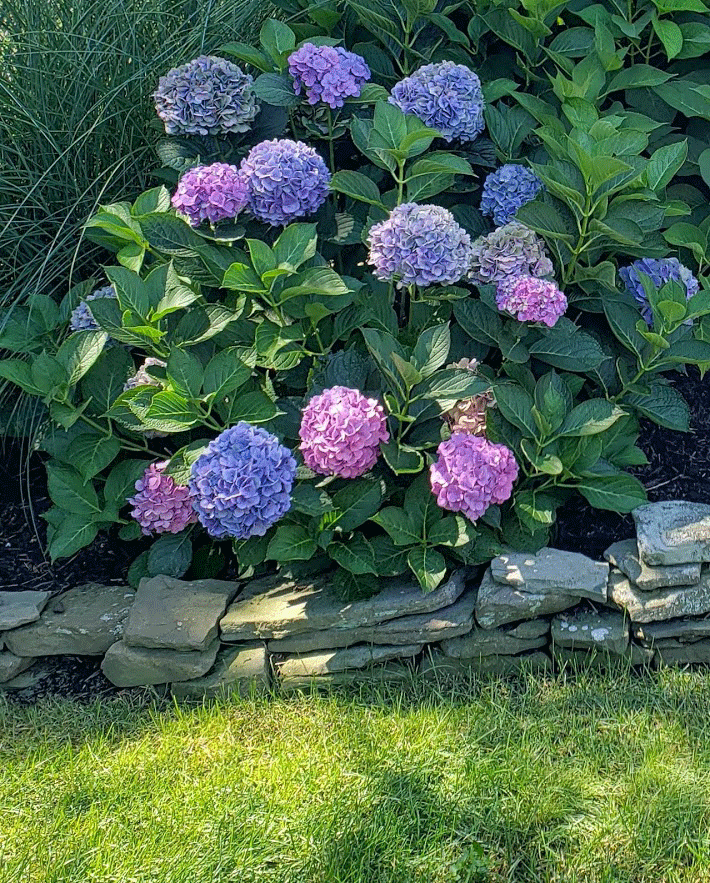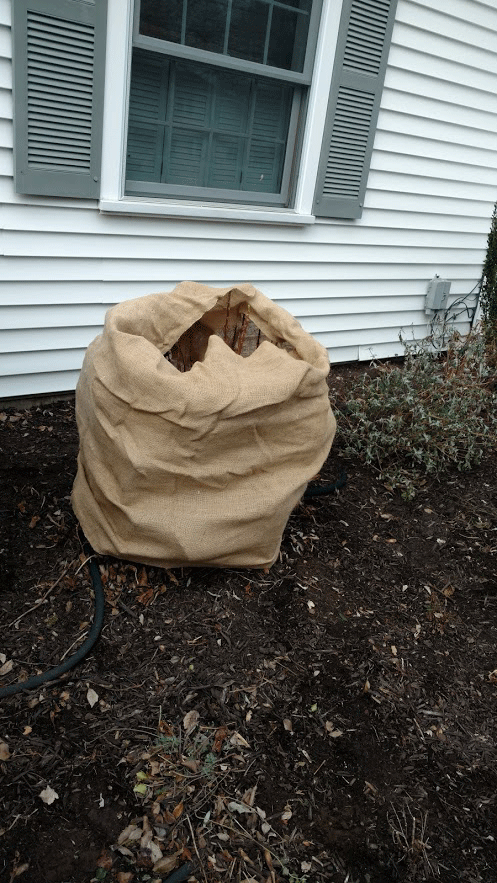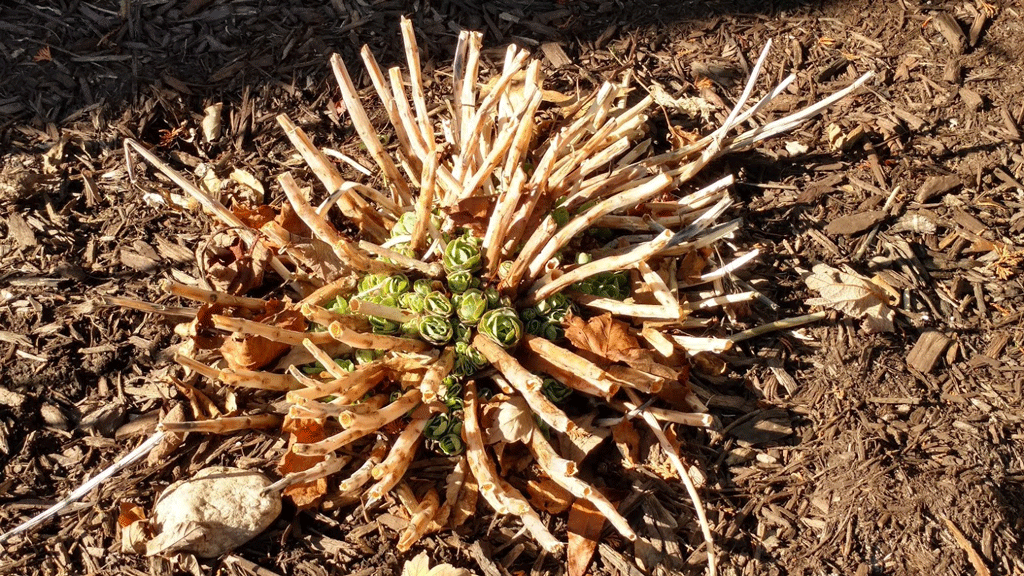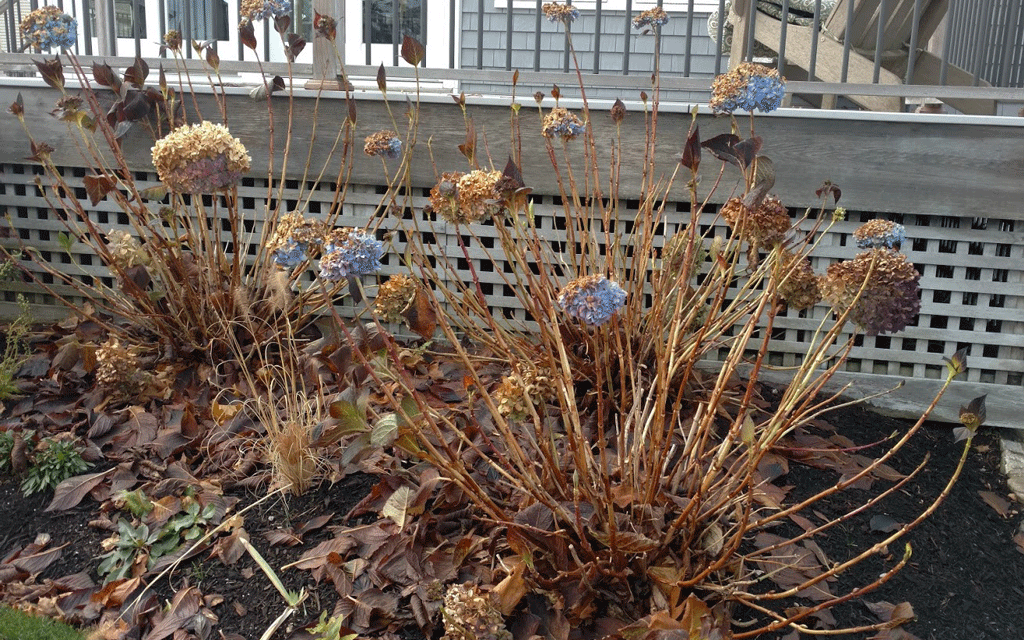Now that we’ve had a couple of frosts and had our first snow, it’s time to put your hydrangeas to bed for the winter. Although not always cold, Connecticut winters are unpredictable with usually a fair amount of freeze/thaw going on. That is – the ground freezes and warms up, then freezes again.
We’re also no strangers to sudden fluctuations in temperature. Some days are balmy in the forties, while others are teeth chattering in the twenties or below zero. This temperature fluctuation can be especially hard on hydrangeas and can really throw them for a loop.
But, with a little extra attention, your hydrangeas can thrive through the winter. Take these few steps and give them a helping hand now. Then, they will reward you with a bounty of blooms next summer.

Keep Hydrangeas Cozy
One of the most common questions we get is: “Why won’t my hydrangeas bloom?” While their roots are hardy to the Connecticut growing zones 6a, 6b and in some cases zone 7, their buds can be affected by old man winter’s harsh weather. Especially along the shore, or in windy areas, hydrangeas that bloom on old wood such as mophead/bigleaf (hydrangea macrophylla) benefit from wrapping. You can loosely wrap your hydrangeas in burlap and either tie it in a knot, or loosely “sew” it along the sides with some garden twine and a large needle.
Essentially, you want to keep your hydrangeas protected from the wind. Wind damage is a very common cause of lack of bloom in these varieties. While some bloom on both new and old wood, it’s a good idea to wrap the mophead/bigleaf varieties regardless of which type of wood they bloom on. By protecting them, you ensure a greater number of blooms the following season.
Generally speaking, I like to leave the top open. Heavy, wet snow can crush the tops of them, and snow is an insulator. It’s the wind you want to protect them from. The hardier hydrangeas – such as the paniculata and arborescens hydrangeas – don’t necessarily need the burlap protection, however, it can help prevent branch die-back in extreme cold or icy conditions.
Since most hydrangeas are wider at the top than at the base, it can sometimes be challenging to wrap them with burlap. Instead, you can always create a “frame” around them with bamboo so that you have something to secure the burlap. For smaller shrubs, you can create a tepee shape to help with the heavy wet snow. Don’t worry if all the leaves haven’t yet fallen off your hydrangeas. What doesn’t fall off in the winter will fall off in the spring when the new leaves push out.

Mulch Matters
While I mentioned that all hydrangeas are root hardy in all of the Connecticut growing zones, mulch does help add an extra element of protection. Hydrangeas need a lot of water (hence the beginning of their name “hydra”). When the ground is frozen, they can’t absorb water. By adding an extra layer of mulch, you insulate the roots and also prevent the wind from causing the water in the ground to evaporate. This also helps keep the weeds down around them which compete for nutrients throughout the season.

Decorative mulch is pretty, but for the winter, we recommend a good 3”-6” layer of leaves. It might not be pretty, but wrapped under burlap it doesn’t matter. By the spring, most of the leaves will decompose and add organic matter to the soil, which is great for all plants. The freeze/thaw cycles can wreak havoc on plants and even pop them right out of the ground!
They don’t have the ability to put on and take off layers the way we do, so mulch keeps the soil around the roots a steady temperature. This enables the hydrangeas to just be dormant rather than struggle with the fluctuation in temperatures. Early winter (now) is the best time to do this. If you mulch too early, it can cause rotting, disease, or a cozy warm spot for unwanted insects to winter over.
Pruning
There is quite a bit of confusion when it comes to pruning hydrangeas. Sometimes hydrangeas can be too tall or too wide. And sometimes people just don’t know how or when to prune them. I know some people that have had their hydrangeas cut back to the ground in the fall. This is a big no-no, especially for the mophead or pom pom hydrangeas.

While there is no doubt that pruning hydrangeas can increase their health and vigor, not all hydrangeas can be pruned at the same time. Hydrangeas that bloom on old wood – such as the mophead hydrangeas– should only be pruned after they are finished blooming in the late summer or early fall. Others that bloom on new wood – such as the panicle hydrangeas – should be pruned in the late fall or late winter before they wake up in the spring.
What about the newer varieties of hydrangeas such as the Endless Summer that bloom on both old and new wood? While these were developed to help with bud die-back over the winter and to help take the mystery out of pruning, because they do have some blooms on old wood, it’s best to treat all the mophead hydrangeas the same…as if they all bloom on old wood.






